Chinese Wheat Gluten – Kao Fu (The Original Seitan)
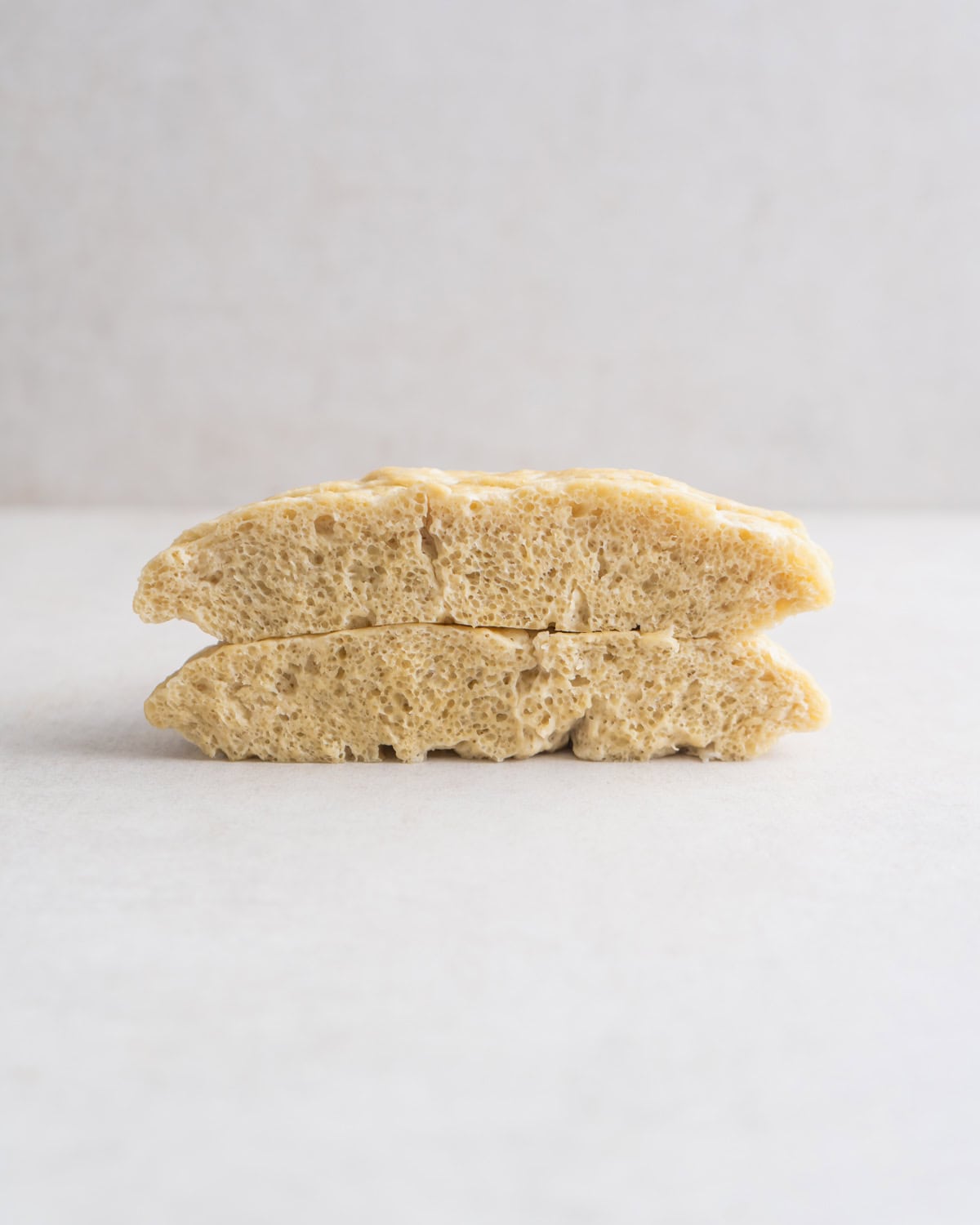
What is Chinese Wheat Gluten?
Chinese Wheat Gluten, also known as Kao Fu (烤麸), is a traditional, plant-based protein made from wheat. It’s widely used in Chinese vegetarian cuisine, especially in dishes that call for a chewy, meat-like texture. Kao Fu is often served in cold dishes, braised with soy sauce and spices or stir-fried with vegetables. Its spongy texture makes it perfect for absorbing flavorful sauces, which is why it’s such a popular ingredient in many savory, umami-packed dishes like Braised Kao Fu or Liang Pi.
History of Chinese Wheat Gluten
The use of wheat gluten in Chinese cooking dates back to ancient times, with roots in Buddhist vegetarian cuisine. During the 6th century in Imperial China, Buddhist monks developed wheat gluten as a way to offer meat-like textures to non-vegetarian visitors of their monastery. The monks found that by washing a simple wheat dough time and again in fresh water, they were able to rinse out the starches and leave behind the glutenous structure. Over the centuries, Kao Fu gained popularity beyond temple kitchens, becoming a beloved ingredient in home kitchens and banquets alike. Today, it’s enjoyed across China and around the world, especially in regions where vegetarian and plant-based diets are common. The starchy water that is leftover after making the Wheat Gluten is rarely discarded, but instead used to make Liang Pi Noodles. The noodles and wheat gluten are then often combined in the noodle dish with the same name, Liang Pi.
Nowadays, wheat gluten is more commonly known under the name seitan, which was coined in the 20th century by the Japanese macrobiotic diet advocate George Ohsawa. It has gained significant popularity among vegans and vegetarians for its incredibly chewy texture and its ability to absorb flavors, making it an ideal substitute for meat in many recipes.
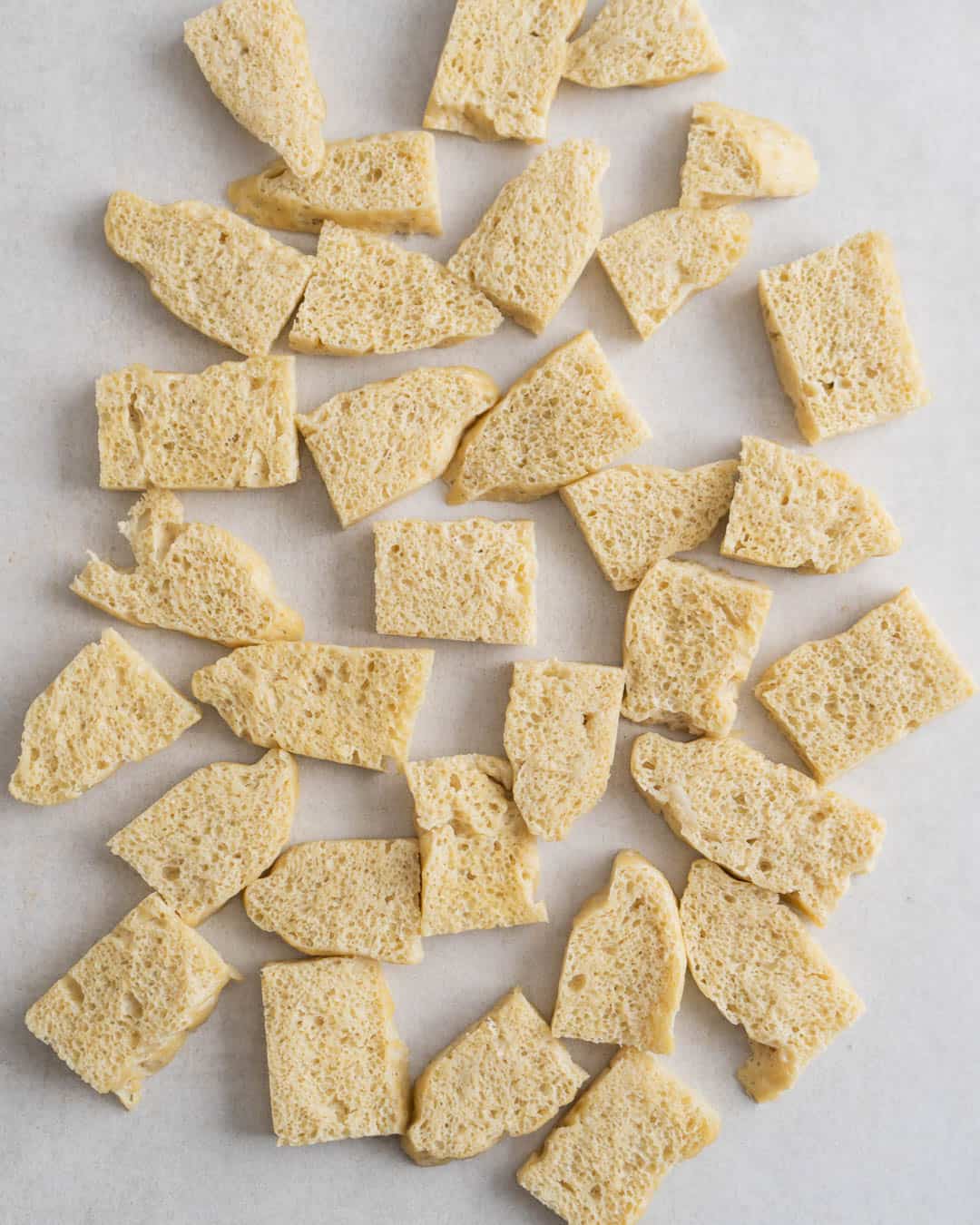
Ingredients You’ll Need & How to Substitute
To make Chinese Wheat Gluten, you only need two ingredients.
- Plain Flour: This is the primary ingredient used to create gluten. Bread flour will work too, but if you’re planning to make Liang Pi (recipe coming soon), the bread flour will give the starches a greyish color.
- Water: Essential for forming the dough and activating the gluten.
How to make Chinese Wheat Gluten (step-by-step)
Prepare the Dough. In a bowl, mix the flour and water to a rough dough.
Knead the Dough. Tip it out onto a clean work surface and knead it for 5 minutes until smooth. Place it in large clean bowl, cover with a damp kitchen towel and leave to rest for 10 minutes. Tip it out again and knead it for just one minute more. It should be smooth and elastic. Then return to the bowl, cover and rest for 30 minutes.
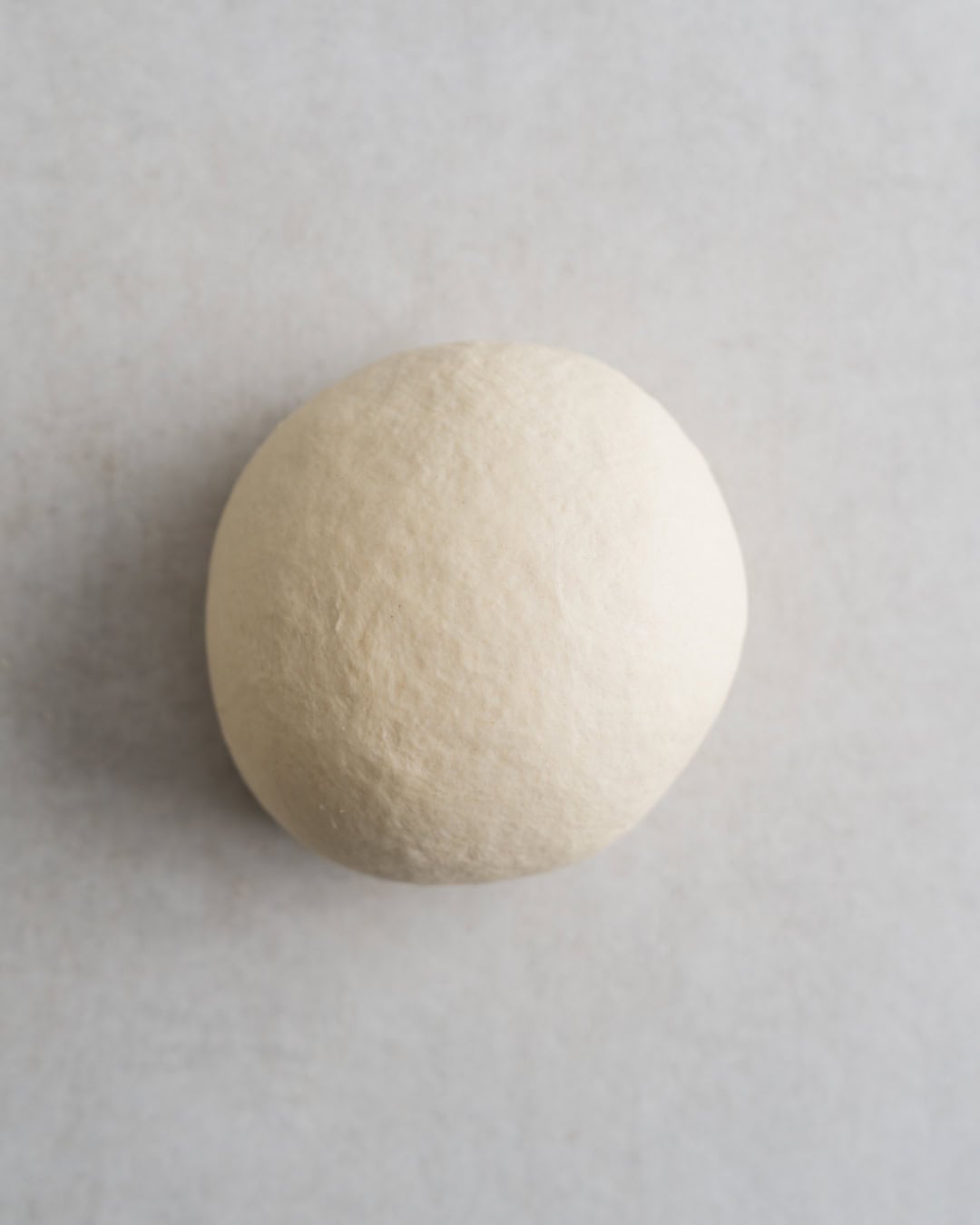
Wash the dough. Cover the dough with 1l of fresh water and start kneading and squishing it between your hands for around 2 minutes to release the starches, taking care not to tear it apart too much. The water will turn completely white. Drain and repeat 4-5 more times with fresh water or until most of the starches have washed out and the water no longer turns white but only a little cloudy (10-15 minutes). You should be left with a dense, springy mass of gluten. If you want, you can use the starchy water to make Liang Pi Noodles.

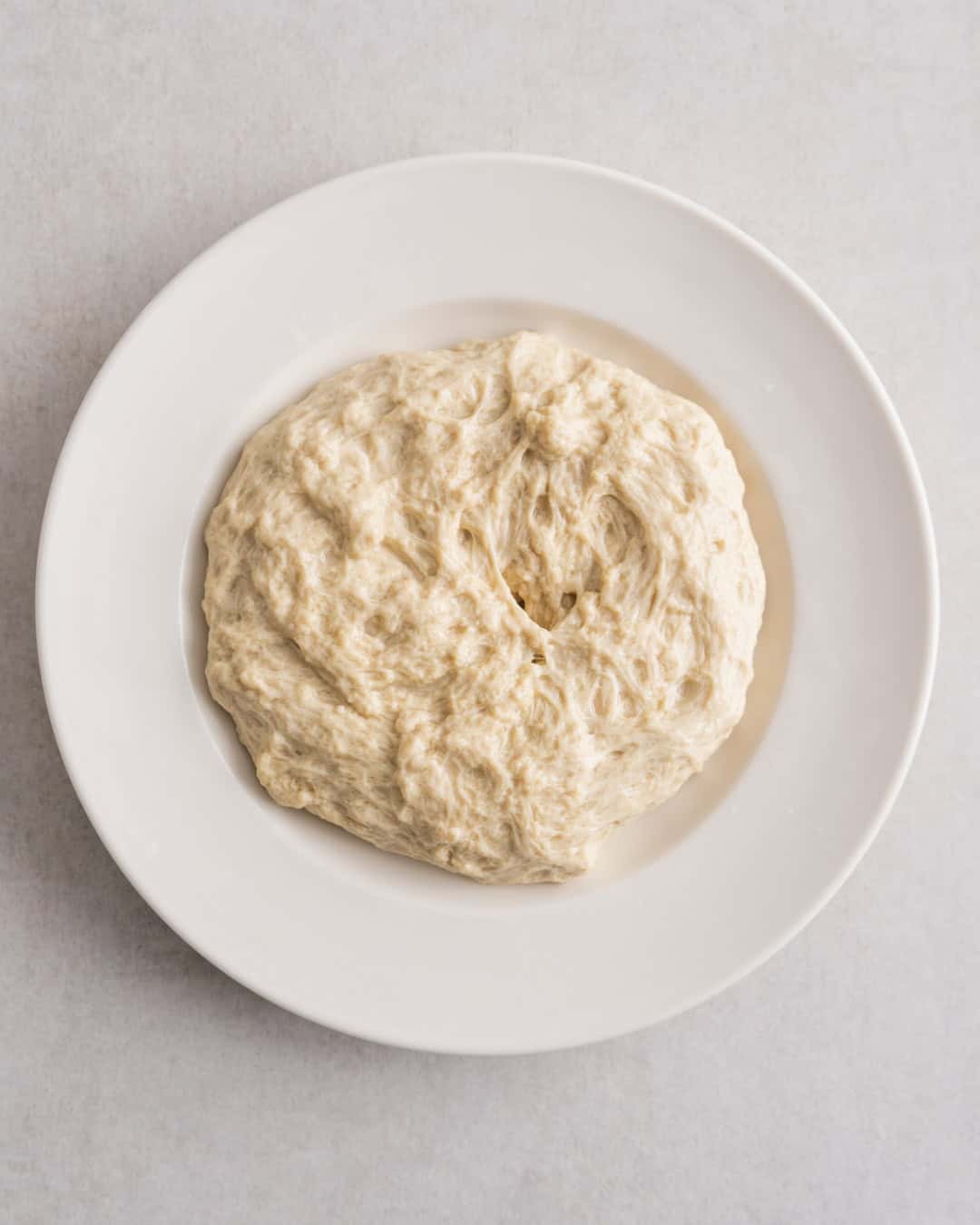
Steam. If you have a steamer: Bring a shallow amount of water to a boil in a pan wide enough to hold the steamer. Put the gluten on a plate in the steamer, cover and steam for 30 minutes.
If you don’t have a steamer: Place the gluten on a ceramic plate. Roll some aluminium foil into three golf ball-sized pieces and put them in a wide pan for which you have a lid, then rest the plate on top of the rolled up foil. Carefully pour in boiling water from the kettle to cover the bottom of the pan by a few centimetres without letting the water touch the plate. Return the water to a rapid boil, reduce the heat and steam covered for 30 minutes.

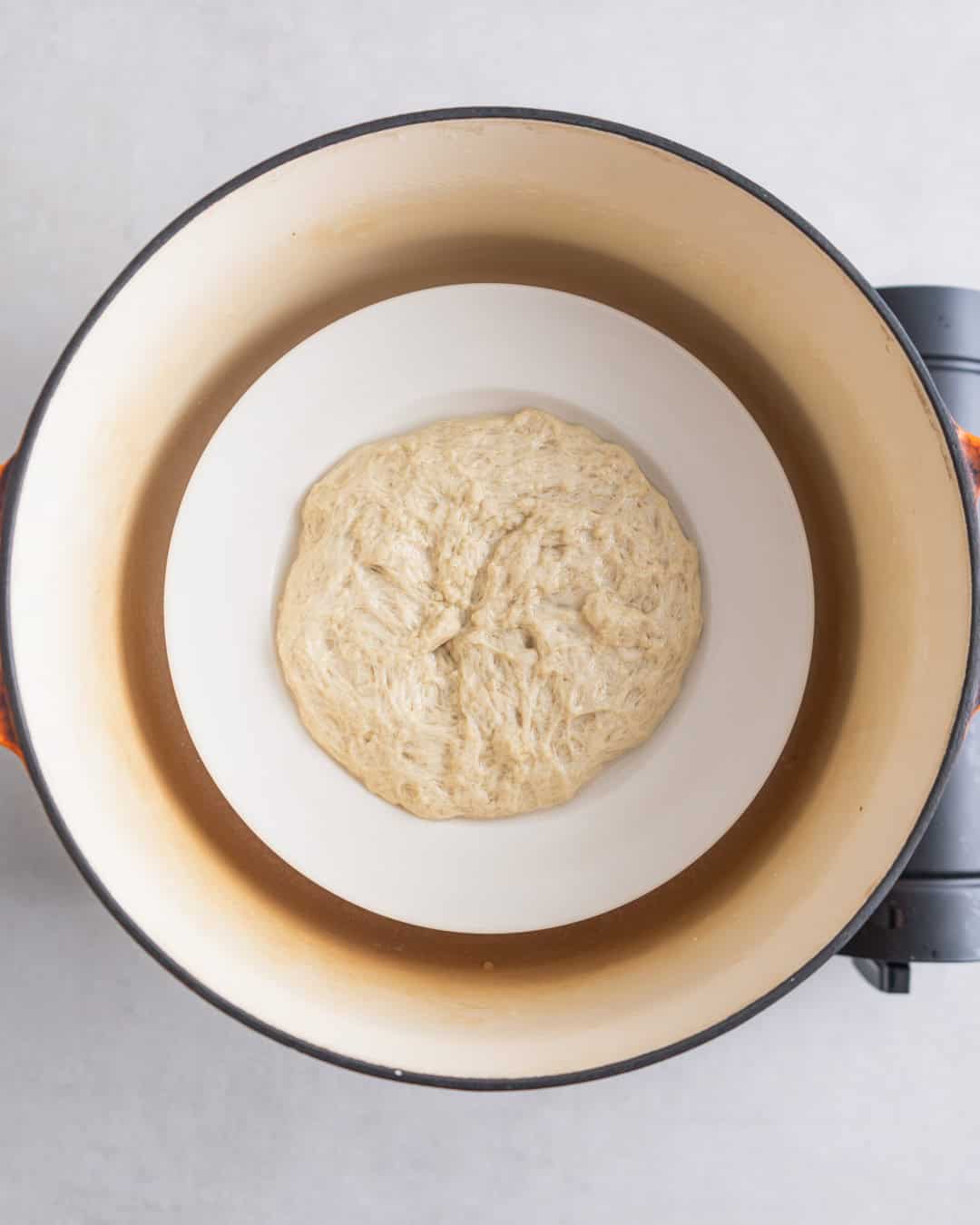
Remove and Slice. Carefully remove the gluten from the plate and cut it into bite-sized slices or pieces.
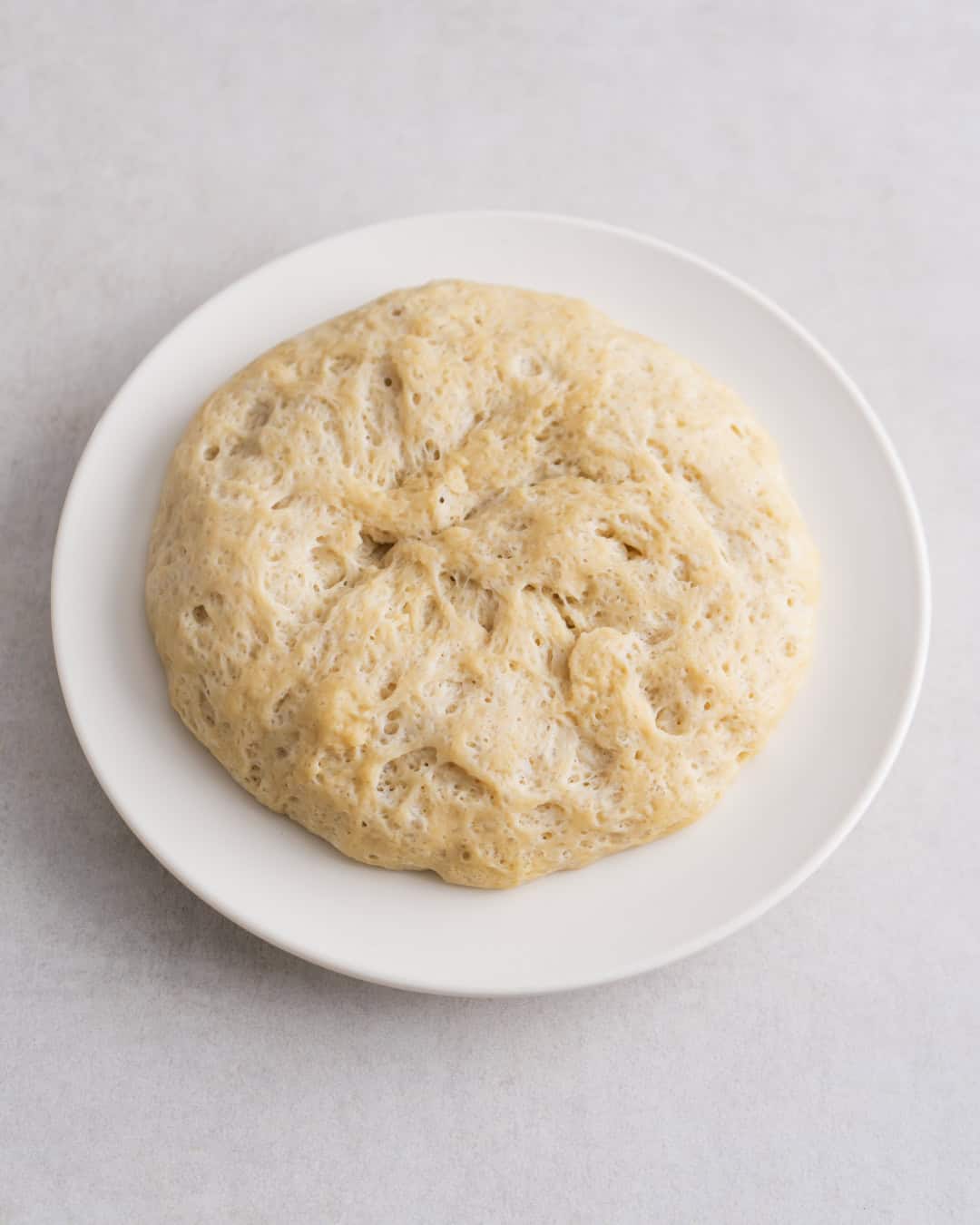
Use. Your gluten is ready to be used in dishes like Braised Wheat Gluten (Kao Fu 烤麩) or Liang Pi (Chinese Spicy Cold Skin Noodles).

Useful Tips
- Kneading the Dough: Kneading the dough initially will kickstart the gluten development. But thanks to a process called autolyse, the development continues while the dough rests. Allowing the dough to relax between kneading will result in a strong glutenous structure and an easy-to-handle dough.
- Leftover Starchy Water: The starchy water is rarely discarded, but used to make Liang Pi Noodles and the cold noodle dish with the same name, Liang Pi.
- Texture Matters: Steaming the gluten allows it to expand, giving it a light but chewy texture that absorbs flavor. This is best done right after washing the dough. You can also refrigerate the washed gluten and steam it the next day, but it will remain dense rather than spongy.
- Steaming Without a Steamer: If you don’t have a steamer, you can use balls of aluminium foil to create a trivet on which to rest a plate. That way you can steam the gluten in a wide pan. See recipe for the full method.
- Boil the Gluten: Instead of steaming, you can also tear the gluten into pieces and cook it for five minutes in boiling water.
What to Do With Wheat Gluten?
My favourite way to use Wheat Gluten is in the traditional Shanghainese dish Braised Kao Fu. It’s the perfect example of how the gluten absorbs all of the aromatic braising liquid while giving a pleasant texture to the dish. Alternatively, you can use the wheat gluten the same way seitan is used nowadays – as a meat substitute.
Why You’ll Love This Chinese Wheat Gluten Recipe
- naturally & traditionally vegan
- protein-packed
- natural meat alternative
- flavor-absorbing
- chewy texture
How to Store Chinese Wheat Gluten
Store homemade wheat gluten in an airtight container in the fridge for 3-4 days. For longer-term storage, freeze the gluten for up to three months. When ready to use, simply thaw in the refrigerator overnight and use as desired.
You can also store the washed, uncooked wheat gluten for 1 day in the fridge and then steam or cook it the next day, though it won’t expand this way.
Other Chinese Recipes You Might Like
- Black Fungus Salad: a fragrant salad made with cloud ear mushrooms
- Liang Fen: satisfying mung bean jelly noodles
- Xingren Doufu: a refreshing almond tofu
- Jian Dui: sesame seed balls filled with a sweetened red bean paste
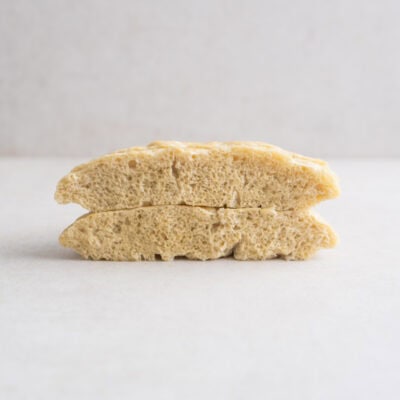
Chinese Wheat Gluten - Kao Fu (The Original Seitan)
Ingredients
- 500 g plain flour
- 290 ml water
Instructions
- In a bowl, mix the flour and water to a rough dough. Tip it out onto a clean work surface and knead it for 5 minutes until smooth. Place it in large clean bowl, cover with a damp kitchen towel and leave to rest for 10 minutes. Tip it out again and knead it for just one minute more. It should be smooth and elastic. Then return to the bowl, cover and rest for 30 minutes.
- Cover the dough with 1l of fresh water and start kneading and squishing it between your hands for around 2 minutes to release the starches, taking care not to tear it apart too much. The water will turn completely white. Drain and repeat 4-5 more times with fresh water or until most of the starches have washed out and the water no longer turns white but only a little cloudy (10-15 minutes). You should be left with a dense, springy mass of gluten. If you want, you can use the starchy water to make Liang Pi Noodles. To boil the gluten, see Notes. To steam, continue below.
- If you have a steamer: Bring a shallow amount of water to a boil in a pan wide enough to hold the steamer. Put the gluten on a plate in the steamer, cover and steam for 30 minutes.
- If you don’t have a steamer: Place the gluten on a ceramic plate. Roll some aluminium foil into three golf ball-sized pieces and put them in a wide pan for which you have a lid, then rest the plate on top of the rolled up foil. Carefully pour in boiling water from the kettle to cover the bottom of the pan by a few centimetres without letting the water touch the plate. Return the water to a rapid boil, reduce the heat and steam covered for 30 minutes.
- Carefully remove the gluten from the plate and cut it into bite-sized slices or pieces. Your gluten is ready to be used in dishes like Braised Wheat Gluten (Kao Fu 烤麩) or Liang Pi (Chinese Spicy Cold Skin Noodles).

Can you add herbs and spices to flavour the dough when making this?
You can actually knead some in at the end, after you washed out all the starches. Great idea!
Can you eat this after steaming, not using it in a recipe?
Yes, it’s ready to eat after steaming.